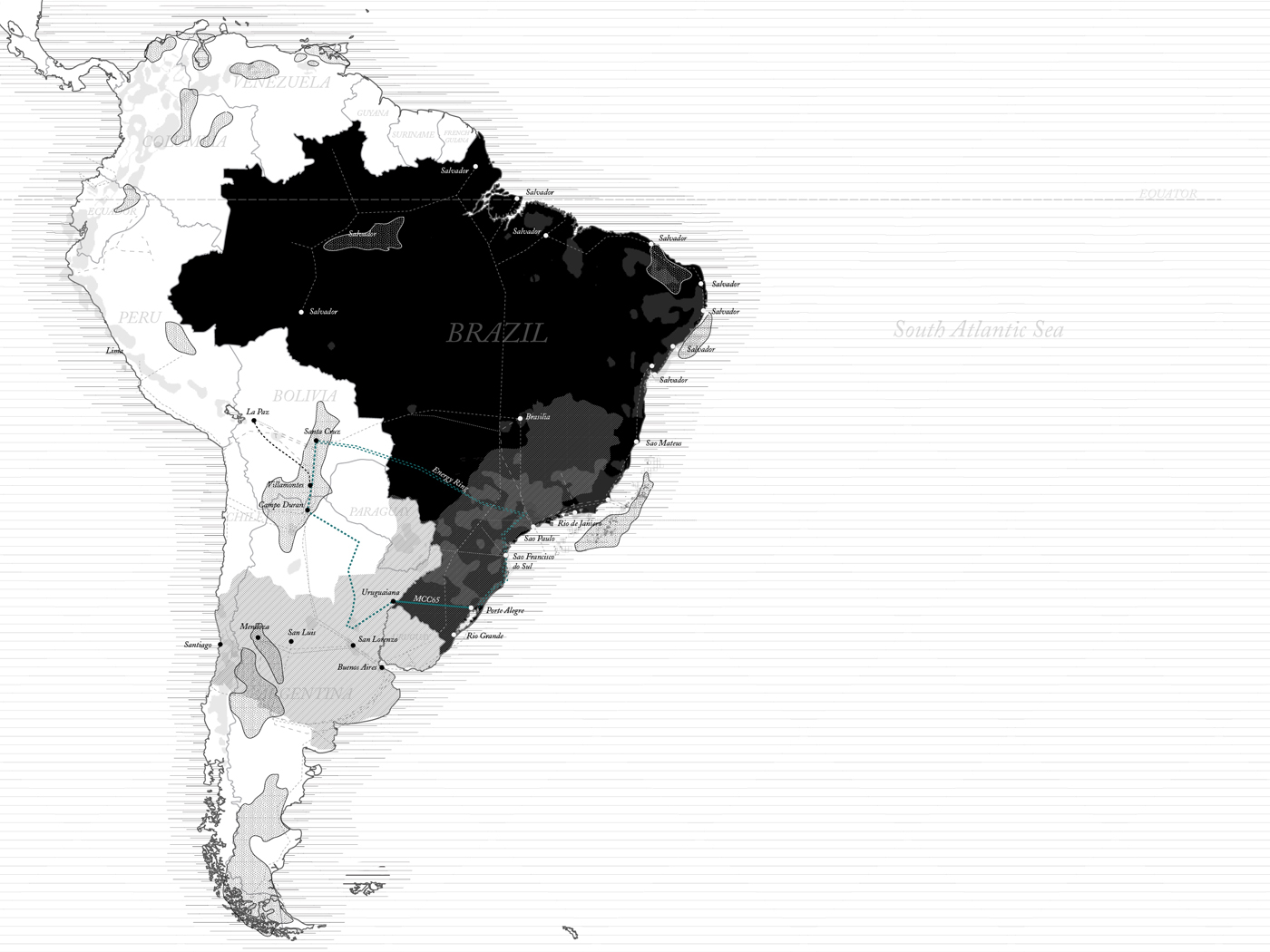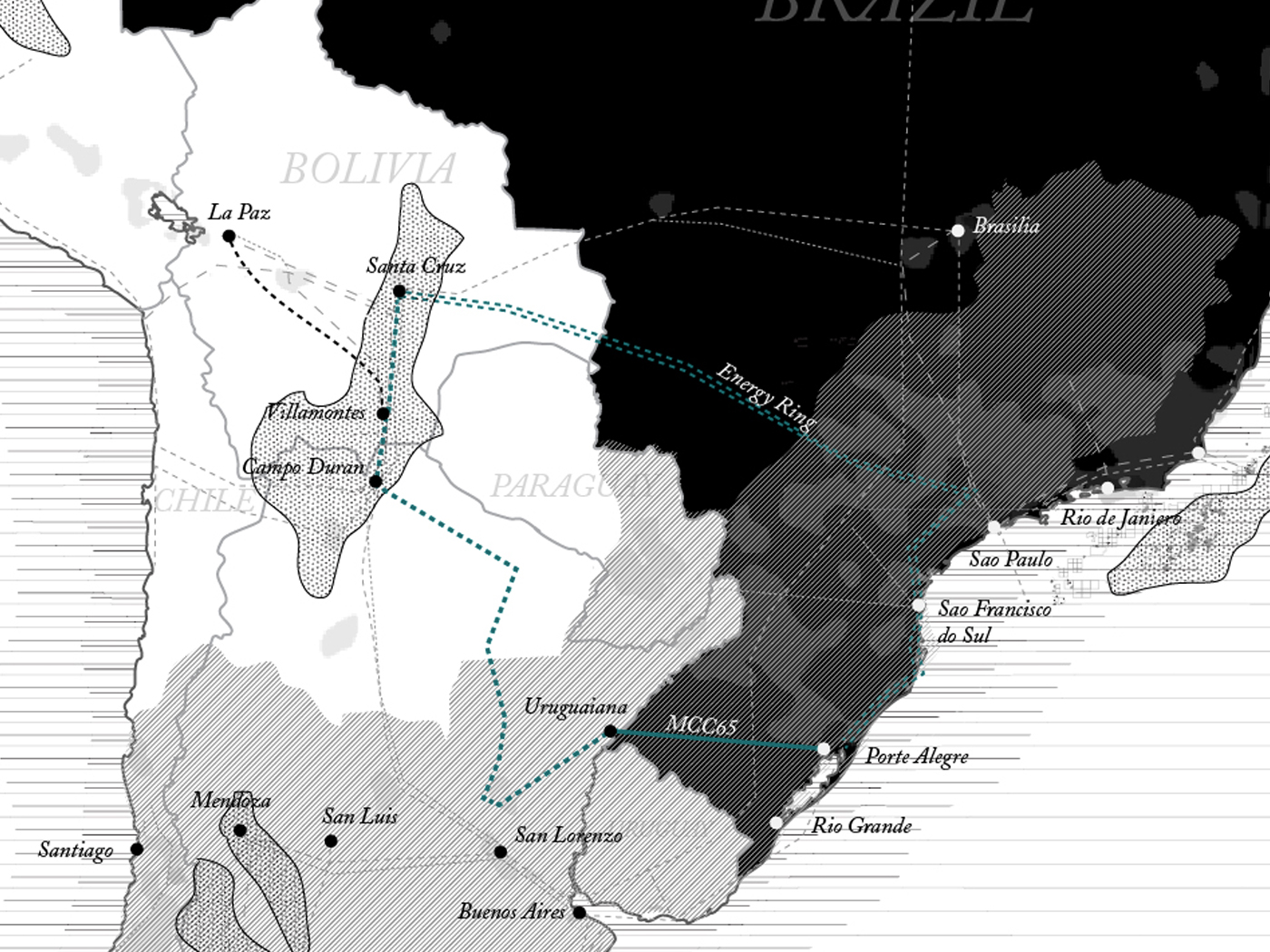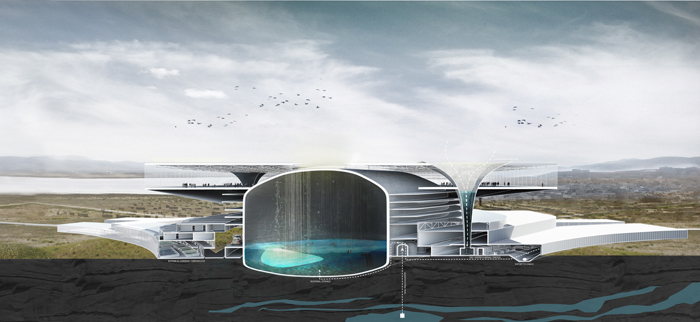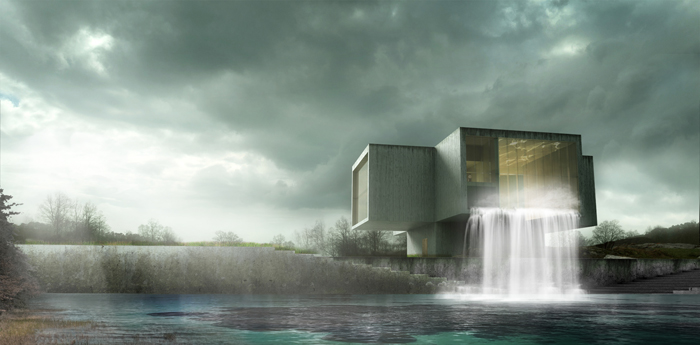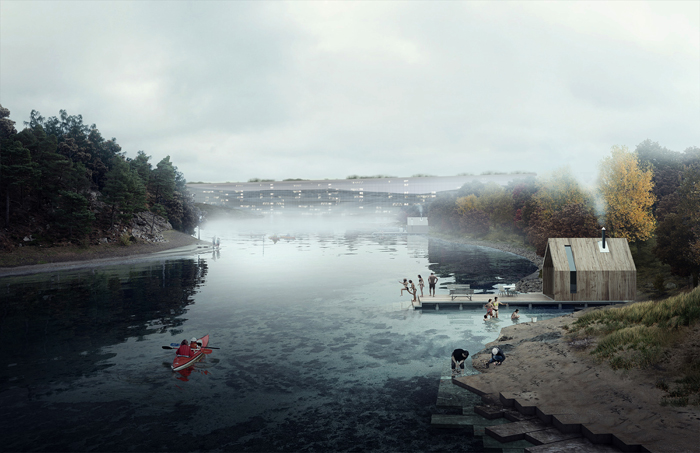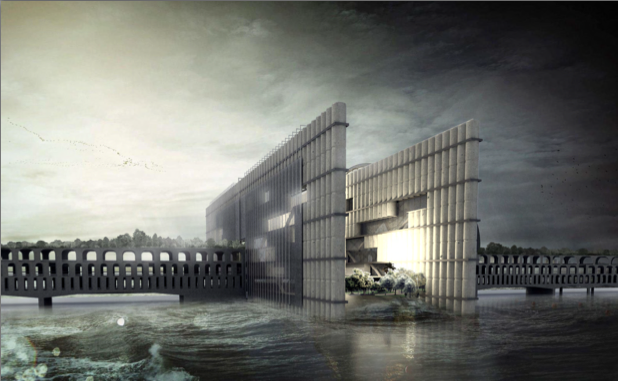RE-WIRING TERRitORIES
Project: Re-Wiring Territories
Class: Advanced Studio, California College of the Arts, Architecture Division
Date: Spring 2014
Instructors: Neeraj Bhatia
In the South American context, we have witnessed how oil extraction processes have set up the initial urban framework for future reappropriation, as in the case of Ciudad Ojeda and Nueva Lojo, undeterred by the incongruence between the value sets of the first and second phases of production. Felipe Correa’s research into these regions has elucidated that, 'The metrics of the oil camp have become the template for a new type of post-oil city, one that is a direct byproduct of the oil extraction process itself’.[1] It is the permanence of the infrastructures that extraction processes yield, often in remote areas, that is a critical factor in the second production of these urban settlements. Understanding the lifespan of the oil industry as approximately twenty-five years, we must question how these processes and infrastructures can be deployed in a manner to account for their future production(s), which involve cultural, political, geographic, and economic factors as well as the specificity of their logistical processes. This positions logistics and their infrastructural formats as the crucial mechanisms by which to harvest future urban organizations.
We could say that the major spatial formats of logistics consist of surfaces, containers, and conduits. [2] These formats have colonized vast swatches of peripheral urban environments, and operate at a scale that is more closely aligned to global and regional logistics than to those of the city. Surfaces are planes of mediation that typically operate at a territorial scale as they are primarily implicated in a form of harvesting or collection. Containers are architectural shells of enclosure often located between the formats of surfaces and conduits, for the storage, refining, or distribution of a particular good. The conduit as a type is tasked with interfacing between the scale of the territory and that of architecture. These types are used to transfer matter and energy across vast distances that must negotiate local settlements, politics, ecosystems, and both containers and surfaces. Because of the trans-scalar nature of conduit systems and their associated infrastructures, they often inscribe territorial zones for further development. A simple example would be the discussions involving high-speed rail in the United States. While high-speed rail operates as a conduit to move people and goods through the landscape, it requires a particular carrying capacity of people or trade to be viable. At the same time, certain nodes within high-speed rail networks profit from their geographic location in opportunistic stopping points within the network, which activates new populations and economies. While the interdependence between transport infrastructure and urban growth is largely documented, little acknowledgement of the role of oil or gas pipelines, as territorial conduits in harvesting a regional framework for urbanism, has been made.
Pipelines are large infrastructural conduits used to transport oil or gas, deployed primarily between points of extraction and refining. Pipelines are desirable because they are able to transport energy in a more efficient, reliable, and safer manner than tanker trucks or rail tanker cars. [3] ‘As they typically move through varied ecological zones, political boundaries, and cultures, they require collaborative efforts between several divergent actors.’ Currently there are over five million miles of pipeline in the world, dedicated to oil and gas transportation. Connected continuously, this would encircle the world’s equator two hundred times. [4]
Within the oil industry, pipelines are often used between key logistical moments, linking sites of extraction and storage, storage and refining, and refining and product terminals. Crude oil gathering lines originate at a production field tank battery, which is a gathering station for different sources of crude oil. These lines are typically two to twelve inch pipes associated with a pump station that move the crude oil to a main line. [5] ‘The main line transports the crude to refineries, and is typically eight inches or larger in diameter. Main lines often cross through hundreds of kilometres of varied geographic topography and political borders. The refined products pipeline is the final conduit within the logistical chain, and transports refined oil from the refinery to product terminals. These terminals are large tank farms located near consumers.
While the technical engineering and properties of fluid dynamics determine the internal specifications of the pipe’ including the diameter, thickness, material selection, fittings, etc.,the outside of the pipeline needs to interface with the external environment, including its topography, climate, political policies, and cultures. While the features of the external environment are typically viewed as secondary to the internal specifications of the pipeline, what if the environment played a larger role in determining the location, trajectory, and design of pipelines and their associated infrastructures? This would include local conditions and cultures in the discussion of mega-conduits, as these settlements will ultimately inherit these infrastructures and potentially utilize them for differing means. This could be viewed as a hybrid infrastructure wherein the top down regional trajectory and internal specifications of the pipe push up against the local environment and its values.
Participants:
Barry Atiabet, Christopher Baile, Jill Chao, Lujac Desautel, Jojit Diaz, Enrique Justicia, Yury Kogan, Mark Nicholson, Blake Stevenson, Jose Vaca
Featuring work by:
Christopher Baile, Lujac Desautel, Enrique Justicia, Blake Stevenson
___
NOTES
1 Felipe Correa, ‘Afterlife Strategies: The Other Post-Oil City’, Volume, nr. 29, (2011): 130.
2 Neeraj Bhatia, et al., ‘Formatting Contingency’ in: Pamphlet Architecture 30: Coupling (New York, Princeton Architectural Press, 2011), 8.
3 Morgan Downey, Oil 101 (New York: Wooden Table Press, 2009), 257.
4 Thomas O. Miesner and William L. Leffler, Oil & Gas Pipelines, (Tulsa: PennWell Books, 2006), 213.
5 Ibid., 3.

